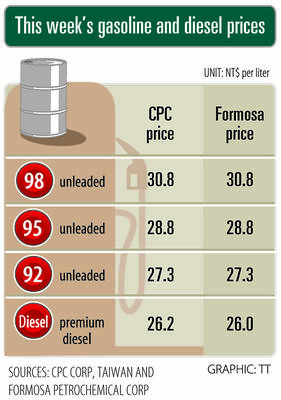China’s manufacturing activity logged a surprise drop last month, official data showed yesterday, on the back of weak demand and as strict “zero COVID-19” restrictions continue to cast a pall on growth.
The purchasing managers’ index (PMI), a key gauge of manufacturing activity in the world’s second-biggest economy, was 49.0, down from 50.2 in June and below the 50-point mark separating growth from contraction, Chinese National Bureau of Statistics (NBS) data showed.
LOCKDOWNS CONTINUE

Photo: Bloomberg
While sweeping COVID-19 curbs have eased in major cities such as Shanghai and Beijing, sporadic lockdowns around the country have kept businesses and consumers worried.
“In July, the manufacturing PMI dropped ... due to factors such as the traditional off-season for production, insufficient release of market demand and decline in prosperity of high-energy-consuming industries,” Zhao Qinghe (趙清河), a senior statistician at the bureau, said in a statement.
Zhao said sharp price fluctuations of raw materials had led some companies to adopt a wait-and-see approach, “weakening purchasing intentions.”
The proportion of firms saying there was insufficient market demand had also increased for four consecutive months, he said, adding that it was the “main difficulty” among manufacturers.
However, officials show few signs of relaxing strict COVID-19 curbs, with policymakers appearing to emphasize “zero COVID-19” over growth in a Chinese Communist Party Politburo meeting last week, where they vowed to strive for “the best outcome” rather than to meet economic and social targets.
“In acknowledging the difficulties, the government has finally become flexible towards this year’s growth target,” ANZ Research analysts said in a note.
GDP GROWTH STALLING
Chinese leaders had originally set a full-year GDP growth target of about 5.5 percent, but with economic expansion of just 0.4 percent in the second quarter, analysts believe that China is unlikely to hit that goal.
China’s non-manufacturing PMI last month dropped to 53.8 from 54.7 in June, NBS data showed.
This follows policies to boost consumption and a pickup in construction activities, the NBS said.

SETBACK: Apple’s India iPhone push has been disrupted after Foxconn recalled hundreds of Chinese engineers, amid Beijing’s attempts to curb tech transfers Apple Inc assembly partner Hon Hai Precision Industry Co (鴻海精密), also known internationally as Foxconn Technology Group (富士康科技集團), has recalled about 300 Chinese engineers from a factory in India, the latest setback for the iPhone maker’s push to rapidly expand in the country. The extraction of Chinese workers from the factory of Yuzhan Technology (India) Private Ltd, a Hon Hai component unit, in southern Tamil Nadu state, is the second such move in a few months. The company has started flying in Taiwanese engineers to replace staff leaving, people familiar with the matter said, asking not to be named, as the

The prices of gasoline and diesel at domestic fuel stations are to rise NT$0.1 and NT$0.4 per liter this week respectively, after international crude oil prices rose last week, CPC Corp, Taiwan (台灣中油) and Formosa Petrochemical Corp (台塑石化) announced yesterday. Effective today, gasoline prices at CPC and Formosa stations are to rise to NT$27.3, NT$28.8 and NT$30.8 per liter for 92, 95 and 98-octane unleaded gasoline respectively, the companies said in separate statements. The price of premium diesel is to rise to NT$26.2 per liter at CPC stations and NT$26 at Formosa pumps, they said. The announcements came after international crude oil prices

SinoPac Financial Holdings Co (永豐金控) is weighing whether to add a life insurance business to its portfolio, but would tread cautiously after completing three acquisitions in quick succession, president Stanley Chu (朱士廷) said yesterday. “We are carefully considering whether life insurance should play a role in SinoPac’s business map,” Chu told reporters ahead of an earnings conference. “Our priority is to ensure the success of the deals we have already made, even though we are tracking some possible targets.” Local media have reported that Mercuries Life Insurance Co (三商美邦人壽), which is seeking buyers amid financial strains, has invited three financial

CAUTION: Right now, artificial intelligence runs on faith, not productivity and eventually, the risk of a bubble will emerge,’ TIER economist Gordon Sun said Taiwanese manufacturers turned more optimistic last month, ending a five-month streak of declining sentiment as concerns over US tariffs, currency volatility and China’s overcapacity began to ease, the Taiwan Institute of Economic Research (TIER) said yesterday. The manufacturing business confidence index rose 1.17 points from June to 86.8, its first rebound since February. TIER economist Gordon Sun (孫明德) attributed the uptick to fading trade uncertainties, a steadier New Taiwan dollar and reduced competitive pressure from Chinese producers. Taiwan’s semiconductor industry is unlikely to face significant damage from Washington’s ongoing probe into semiconductors, given the US’ reliance on Taiwanese chips to power artificial